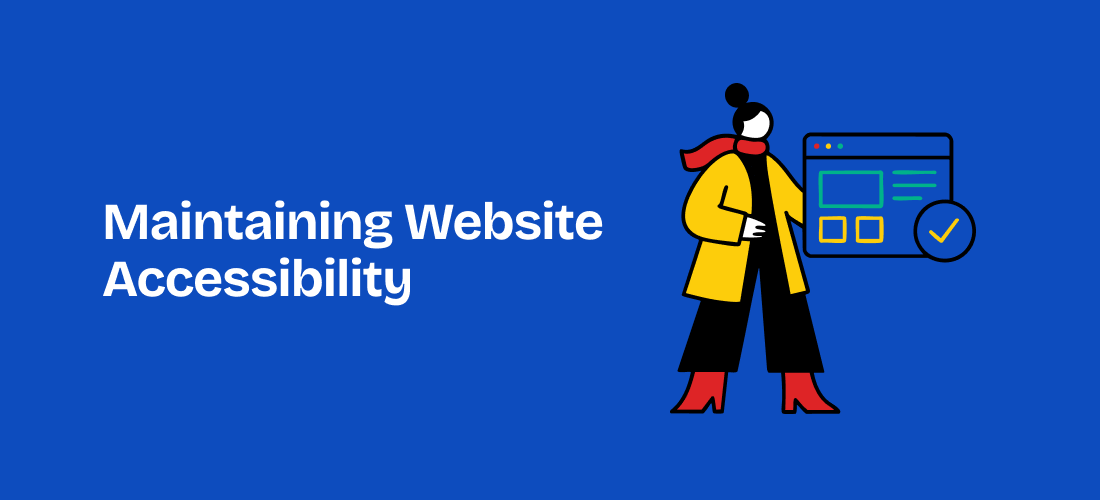Web design and development is an ever-evolving field requiring a blend of creativity, technical expertise, and problem-solving skills. As technology advances and user expectations rise, web developers face increasing pressure to deliver aesthetic, functional, secure, and user-friendly websites.
Whether you’re building a personal blog, an e-commerce platform, or a complex enterprise application, the journey from concept to launch is rarely straightforward. Developers often encounter challenges that can impede progress, increase costs, or compromise the quality of the final product. By identifying these challenges early on and implementing effective solutions, developers can minimize risks and ensure their projects stay on track.
In this blog, we will delve into some of the most common challenges faced in web design and development and offer actionable strategies to address them. Whether you’re a seasoned developer or new to the field, this guide will equip you with the knowledge and tools to overcome these obstacles and deliver successful web projects.
1. Managing Project Scope

Managing the project scope is one of the most significant challenges in web development. Scope creep, or the gradual expansion of a project’s requirements, is a common issue that can lead to missed deadlines, budget overruns, and increased stress for the development team.
The Challenge
Scope creep typically occurs when new features or requirements are added to a project after work has begun. While some changes are inevitable, uncontrolled scope expansion can disrupt the development process and make it difficult to deliver the project on time and within budget.
The Solution
To manage project scope effectively, it’s essential to have a clear and detailed project plan from the outset. Here are some steps to prevent scope creep:
- Define Clear Requirements: Work closely with clients and stakeholders to define the project’s requirements and goals in detail before development begins. Ensure that all parties agree on the project scope and deliverables.
- Use a Change Management Process: Implement a formal change management process requiring changes to the project scope to be documented, reviewed, and approved by stakeholders. Assess the impact of changes on the timeline and budget before proceeding.
- Prioritize Features: Collaborate with stakeholders to prioritize features and functionalities. Focus on delivering the most critical features first, and consider deferring less essential features to future updates or versions.
- Set Milestones: Break the project into smaller milestones with specific deliverables. This approach helps track progress and address any scope-related issues early on.
2. Ensuring Website Security

Website security is a top concern for developers and users alike. With cyberattacks becoming more sophisticated and frequent, ensuring a website is secure from threats such as data breaches, malware, and hacking attempts is a critical challenge in web design and development.
The Challenge
Security vulnerabilities can arise from various sources, including weak passwords, outdated software, and improper handling of user data. A successful attack can result in significant financial losses, legal repercussions, and reputational damage to the website and company.
The Solution
To enhance website security, developers should implement a multi-layered approach that includes the following practices:
- Use HTTPS: Ensure the website uses HTTPS to encrypt data transmitted between the user’s browser and the server. This helps protect sensitive information, such as login credentials and payment details, from interception.
- Regularly Update Software: Keep all software, including content management systems (CMS), plugins, and libraries, up to date with the latest security patches. Outdated software is a common entry point for attackers.
- Implement Strong Authentication: Use strong, unique passwords for all user accounts and encourage users to do the same. Implement multi-factor authentication (MFA) to add an extra layer of security.
- Validate and Sanitize User Input: Prevent common security vulnerabilities, such as SQL injection and cross-site scripting (XSS), by validating and sanitizing all user input. Ensure that user data is properly handled and stored securely.
- Conduct Security Audits: Regularly perform security audits and vulnerability assessments to identify and address potential weaknesses in your website’s security. Use tools like penetration testing and code scanning to detect and fix vulnerabilities.
3. Achieving Cross-Browser Compatibility

Ensuring a website functions consistently across browsers and devices is a significant challenge. Users access websites using a variety of browsers, each with its distinct rendering engine and set of capabilities. Achieving cross-browser compatibility is essential for providing a consistent user experience.
The Challenge
Browsers may interpret and display HTML, CSS, and JavaScript differently, leading to inconsistent layout, design, and functionality. This can result in a poor user experience and potentially alienate users who prefer a specific browser.
The Solution
To achieve cross-browser compatibility, developers should take the following steps:
- Test Early and Often: Test your website on multiple browsers early in the development process. Use tools like BrowserStack or Sauce Labs to test your website on different browsers and devices.
- Use Web Standards: Adhere to web standards and best practices when writing HTML, CSS, and JavaScript. Following standards helps ensure that your code is compatible with most browsers.
- Implement Graceful Degradation and Progressive Enhancement: Use graceful degradation and progressive enhancement techniques to ensure the website functions well on all browsers, even those with limited capabilities. This involves providing a basic version of your website for older browsers while offering enhanced features for modern browsers.
- Avoid Browser-Specific Code: Minimize using browser-specific code, such as vendor prefixes, and rely on feature detection instead. If browser-specific code is necessary, provide fallback options to ensure the website remains functional.
- Stay Updated on Browser Trends: Keep up with the latest trends and updates in browser technology. Regularly check for new versions of browsers and test your website’s compatibility with them.
4. Optimizing Website Performance

Website performance is a critical factor that directly impacts user experience, search engine rankings, and conversion rates. Slow-loading websites can frustrate users and lead to higher bounce rates, making performance optimization a key challenge in web design and development.
The Challenge
Several factors can affect website performance, including large image files, unoptimized code, excessive use of plugins, and server-side issues. Identifying and addressing these performance bottlenecks is essential for delivering a fast and responsive website.
The Solution
To optimize website performance, developers should focus on the following strategies:
- Optimize Images: Compress and resize images to reduce file size without compromising quality. Use modern image formats like WebP for better compression and faster loading times.
- Minify and Compress Code: Minify CSS, JavaScript, and HTML files to remove unnecessary characters and whitespace. Compress these files using Gzip or Brotli to reduce their size and improve load times.
- Implement Lazy Loading: Use lazy loading for images and other media content to defer their loading until needed. This reduces the initial load time and improves the perceived performance of the website.
- Use Content Delivery Networks (CDNs): Implement a CDN to distribute your website’s content across multiple servers worldwide. This reduces latency and improves load times regardless of user location.
- Optimize Server Performance: Choose a reliable hosting provider and optimize your server settings for performance. Consider using caching mechanisms, such as server-side caching and browser caching, to reduce the load on the server and speed up content delivery.
5. Navigating Responsive Design
With the proliferation of mobile devices, responsive design has become necessary in web design and development. A responsive website adapts its layout and content to different screen sizes and orientations, ensuring a consistent user experience across all devices.
The Challenge
Designing and developing a responsive website requires careful consideration of various factors, including layout, typography, navigation, and touch interactions. Ensuring the website looks and functions well on different devices, from smartphones to large desktop monitors, can be challenging.
The Solution
To create a responsive website, developers should follow these best practices:
- Use a Fluid Grid System: Implement a fluid grid system using percentage-based widths for elements rather than fixed pixel values. This allows the website’s layout to adapt to different screen sizes.
- Implement Flexible Images and Media: Ensure that images and other media content are flexible and can scale proportionally within their containers. Use CSS to set maximum widths and heights and prevent images from overflowing their containers.
- Prioritize Mobile-First Design: Start the design process with the smallest screen size in mind and progressively enhance the design for larger screens. This approach ensures the website is optimized for mobile devices while providing an excellent experience on desktops.
- Optimize Navigation for Touch: Design navigation elements, such as buttons and menus, with touch interactions in mind. Ensure that touch targets are large enough and spaced adequately to accommodate users with different finger sizes.
- Test on Real Devices: Test the website on real devices with different screen sizes and resolutions. This allows you to identify and address any issues related to responsiveness and usability.
6. Maintaining Website Accessibility

Accessibility is a crucial aspect of web design and development, ensuring that websites are usable by all people, including those with disabilities. Achieving and maintaining website accessibility is a legal requirement in many regions and an ethical obligation for developers.
The Challenge
Creating an accessible website requires developers to consider various disabilities, including visual, auditory, motor, and cognitive impairments. Ensuring a fully accessible website can be challenging, especially when balancing accessibility with design and functionality.
The Solution
To enhance website accessibility, developers should implement the following practices:
- Follow WCAG Guidelines: Adhere to the Web Content Accessibility Guidelines (WCAG) when designing and developing websites. These guidelines provide best practices for making web content accessible to people with disabilities.
- Use Semantic HTML: Write semantic HTML that accurately represents the structure and content of the website. Use appropriate HTML tags for headings, lists, tables, and forms to improve accessibility for screen readers.
- Provide Alternative Text: Include descriptive alternative text (alt text) for images, icons, and other non-text content. Alt text allows screen readers to convey the meaning of images to users with visual impairments.
- Ensure Keyboard Accessibility: Design the website to be fully navigable using only a keyboard. This includes providing focus indicators, enabling tab navigation, and ensuring that all interactive elements can be accessed without a mouse.
- Test with Assistive Technologies: Regularly test the website with assistive technologies, such as screen readers, screen magnifiers, and voice recognition software. This helps identify and address any accessibility barriers.
7. Managing Client Expectations

Managing client expectations is a critical aspect of web design and development that can significantly impact the success of a project. Miscommunication, unrealistic expectations, and lack of alignment between the client and the development team can lead to dissatisfaction and project delays.
The Challenge
Clients may have high expectations for the project’s features, design, and timeline, without fully understanding the complexities involved in web development. Balancing these expectations with the realities of the development process can be challenging for developers.
The Solution
To manage client expectations effectively, developers should focus on the following strategies:
- Clear Communication: Establish clear and open lines of communication with clients from the outset. Regularly update clients on the project’s progress, discuss any challenges, and set realistic timelines for deliverables.
- Educate the Client: Take the time to educate clients about the web design and development process. Explain the technical aspects of the project, the rationale behind design decisions, and the potential challenges that may arise.
- Set Realistic Timelines and Budgets: Provide clients with realistic timelines and budgets based on the project scope. Avoid overpromising and be transparent about any limitations or constraints.
- Document Agreements: Ensure that all project requirements, deliverables, timelines, and costs are documented and agreed upon in a formal contract. This helps prevent misunderstandings and provides a reference point in case of disputes.
- Involve the Client in the Process: Encourage clients to be actively involved in the development process by providing feedback, participating in design reviews, and making decisions collaboratively. This helps ensure that the final product aligns with the client’s vision.
Conclusion
Web design and development is dynamic and challenging, requiring technical skills, creativity, and problem-solving abilities. From managing project scope and ensuring website security to optimizing performance and achieving cross-browser compatibility, developers have to tackle a range of challenges that can impact the success of their projects.
However, by understanding these challenges and implementing effective solutions, developers can overcome obstacles and deliver high-quality websites that meet user needs and business goals. Whether you’re a seasoned professional or just starting in the field, the strategies outlined in this blog will help you navigate web development’s complexities and achieve success in your projects.









